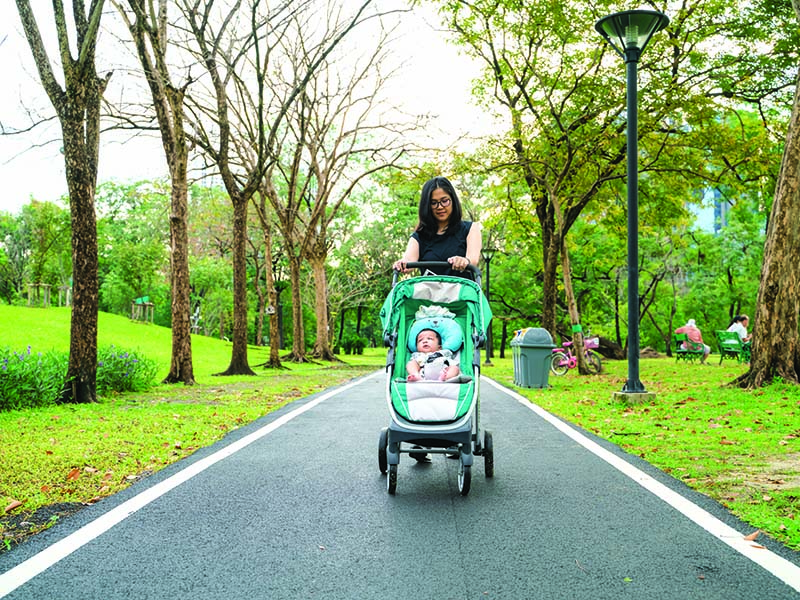Parents need to carefully examine several factors including portability, storage capabilities and safety before purchasing a baby stroller, writes Mini P
 For parents of infants, prams and strollers are a boon, making traveling with young children simple and easy. Whether it’s running errands in town, outdoor walks, park visits or inter-city travel, a pram facilitates painless transport of youngest children. However, parents need to carefully examine several factors including portability, storage capability and safety before purchasing a baby stroller.
For parents of infants, prams and strollers are a boon, making traveling with young children simple and easy. Whether it’s running errands in town, outdoor walks, park visits or inter-city travel, a pram facilitates painless transport of youngest children. However, parents need to carefully examine several factors including portability, storage capability and safety before purchasing a baby stroller.
Stroller purchase guidelines
- Visit baby product stores in person to check out stroller options. Open, fold and weigh stroller models to check weight and ease of lifting and storing in your car. Ensure the stroller is sturdy and most important it fits inside your car boot.
- Adjustable handles are an important add-on as are a cup holder, a canopy to shield the baby from sun or rain, and a basket to store infant essentials.
- A newborn needs a stroller that allows her to lie down/sleep. If the infant is over six months of age, consider a stroller that doesn’t recline. A double stroller can accommodate two children.
- Evaluate the option of a car seat-cum-stroller for infants. You can continue using the stroller after she outgrows the car seat.
- Check for safety belt and harness, and facility to lock the stroller’s wheels when stationary.
- Strollers with adjustable or pivoting handle heights are ideal to accommodate adult height differences.
- If you’re tall and take long strides, choose a stroller with smaller wheels and adjustable handles.
- A lightweight stroller is ideal as it’s easy to lift, port and store.
- Check for ease of opening, closing and storing functions.
Safety precautions
- Don’t leave your infant unattended in a stroller, especially when she’s sleeping. There’s a possibility she could slide into a leg opening and strangle. Always use the safety belt or harness and lock the stroller’s wheels when stationary.
- To prevent possible choking, remove and discard all packing material before using the stroller.
- Ensure the stroller is in the open position and the brakes are fully locked before putting the infant inside.
- Adjust stroller seat to the reclining position when the infant falls asleep or wants to rest.
- Don’t ever carry or roll a stroller on the stairs or escalator with your child in it.
- Don’t hang things on the handle bar or place them on the canopy; they can tip the stroller over and injure your child.
- Be careful when pushing the stroller over road curbs or steps. Push the stroller at a normal walking pace.
- Don’t overload console, storage basket or pockets. The stroller may tip over.
- Don’t place hot liquids in the console. Spills can burn your child.
- Don’t carry additional children, goods, or accessories in the stroller except as recommended in the manufacturer’s instructions.
- Never leave the stroller on a hill or incline, even with brakes set.
- To avoid accidental rolling, always set brakes when the pram is not being used.
- To avoid accidental strangulation, don’t suspend strings or toys from the canopy or place the pram near cords of window blinds, draperies, phone, etc.
- Ensure that the child’s hands/legs are clear of any moving parts of the stroller.
- To avoid injury to your child, don’t use the storage basket as a child carrier.























